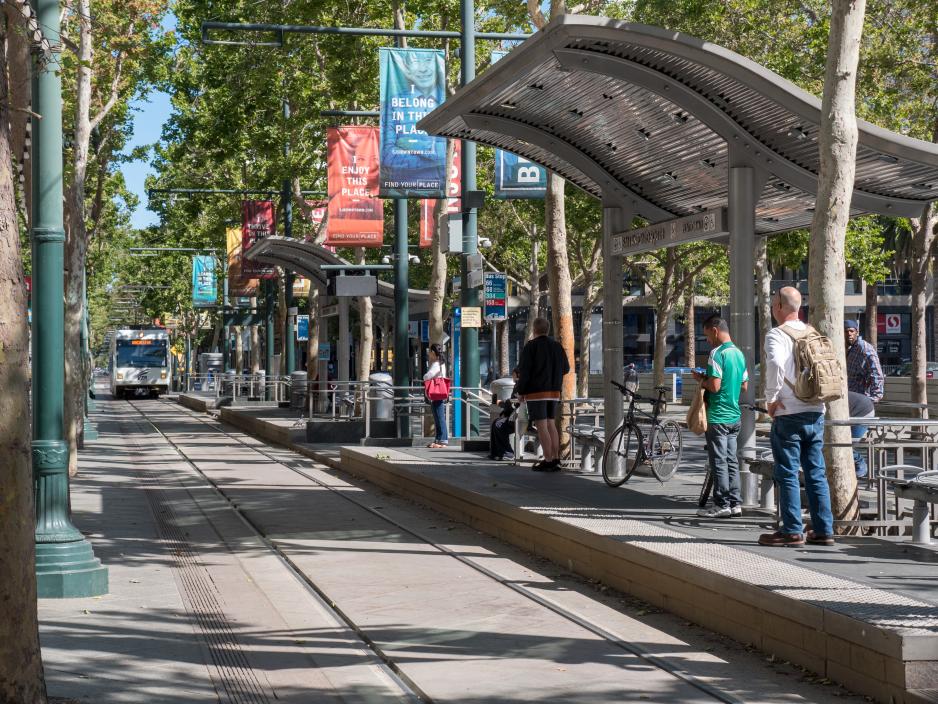Communities designed to enable people to accomplish daily activities in equal comfort through multiple transit modes lead to healthy, vibrant public life. Concentrating services, activities, and public spaces in close proximity of one another promotes pedestrian traffic and human interaction, which allows people to conduct their daily life in a desirable and sustainable manner and offers choices for housing and transportation to suit different lifestyles. Public life near transit should encourage people to dwell and engage with the surrounding environment.
While all modes of transportation need to be considered, designing for the pedestrian creates interesting, inviting, and safer environments. The pedestrian environment is the tissue that binds the building blocks of the environment together and is the underlying foundation for all levels of development.
Activated frontages, together with well-lit public places, with good lines of site, that encourage sitting and viewing, are critical to a vibrant public realm. The most used seating spaces tend to be where people can arrange things for themselves or where the design offers flexibility for personal preference, weather, sun/shade, and seasonal changes. Usable and accessible parks and public spaces are more important than an abundance of open space. The design, location and programming of open spaces are important to make sure these spaces are used and maintained, otherwise that same open space becomes a potential barrier in the overall open space network.
Urban Pattern
Provide a fine-grained street and block pattern near transit as new development occurs and encourage infill in existing lower density areas.
Open Space Structure
Ensure quantity and interconnectedness of open spaces near transit as development occurs.
Streetscape Design
Design high-quality complete streets that are safe, attractive and comfortable for all users.
Open Space Design
Ensure open spaces are designed to foster community interaction and enhance livability.
Transit Waiting Area Design
Provide safe, pleasant waiting areas that are clearly identifiable.
Crime Prevention Through Environmental Design
Design the public and private realms to increase the sense of security near transit.
Mobility
Design for active transportation and transit to be the easiest choices to support a pedestrian-oriented urban realm near transit.
Community Identity
Vibrant public life leads to strong community pride, economic success and cultural identity.
Community Wellbeing
Create urban environments that support health and wellness in neighborhoods near transit.
Case Studies
- Los Angeles, California, USA - South Figueroa Street
- Chester, England, UK – Frodsham Street
